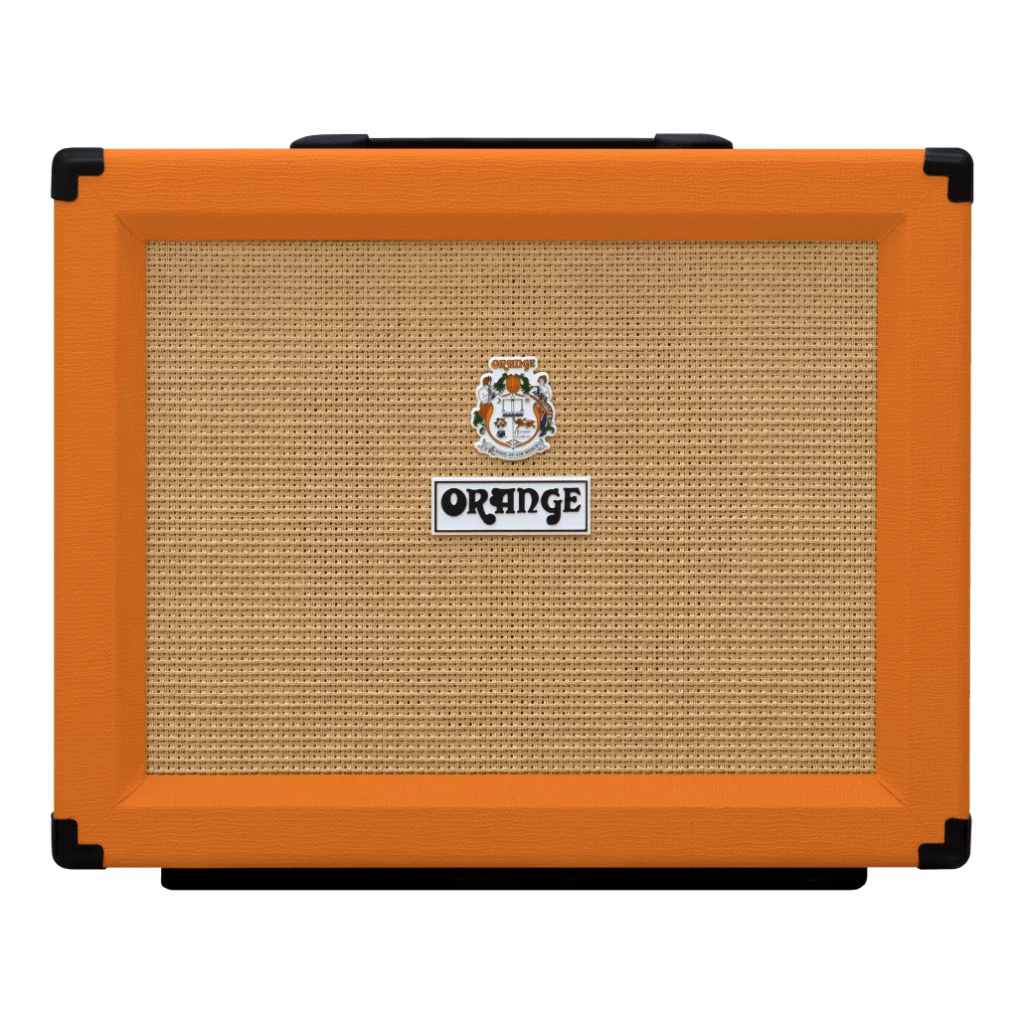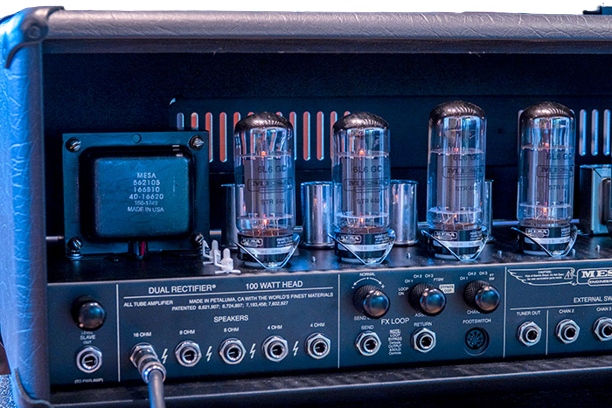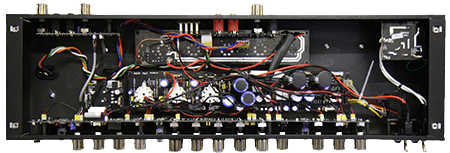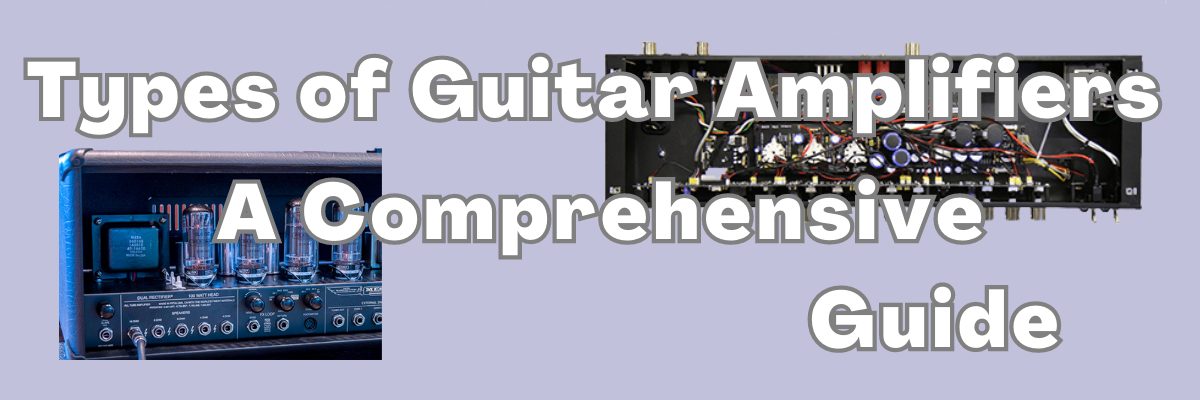Types of Guitar Amp: A Comprehensive Guide.
When it comes to playing the guitar, the amplifier is just as important as the guitar itself.
Table of Contents

Hi. Ian here, and welcome to this article on the different types of guitar amps.
Guitar amps are essential for electric guitarists, as they amplify the sound of the guitar so that it can be heard by an audience. There are many different types of guitar amps available, each with its unique sound and features.
Here is a brief overview of the four main types of guitar amps:
- Tube amps: Tube amps are the oldest type of guitar amp and are known for their warm, rich sound. They use vacuum tubes to amplify the signal, which gives them a unique character that many guitarists prefer. Tube amps can be expensive and heavy, but they are worth the investment for serious guitarists.
- Solid-state amps: Solid-state amps are more affordable and portable than tube amps, and they are also more reliable. They use transistors instead of vacuum tubes, which gives them a cleaner, more modern sound. Solid-state amps are a good choice for beginners and intermediate guitarists.
- Modeling amps: Modeling amps use digital technology to emulate the sound of different types of amps and pedals. This makes them a versatile option for guitarists who want a variety of sounds in one package. Modeling amps are also a good choice for beginners, as they can be used to learn about different amp tones without having to buy multiple amps and pedals.
- Hybrid amps: Hybrid amps combine the best features of tube and solid-state amps. They typically use a tube preamp and a solid-state power amp, which gives them the warm sound of a tube amp with the reliability and portability of a solid-state amp. Hybrid amps are a good choice for guitarists who want the best of both worlds.
In addition to these four main types, there are also several other specialized guitar amps available, such as bass amps, acoustic amps, and practice amps.
Which type of guitar amp is right for you?
The best type of guitar amp for you will depend on your budget, playing style, and personal preferences. If you are a beginner, I recommend starting with a solid-state amp or a modeling amp. These amps are affordable and versatile, making them a good choice for learning and experimenting.
If you are a more experienced guitarist, you may want to consider a tube amp or a hybrid amp. These amps offer a wider range of tones and more features, but they are also more expensive and heavier.
Here are some additional tips for choosing a guitar amp:
- Consider your budget. Guitar amps can range in price from a few hundred dollars to several thousand pounds/dollars.
- Think about your playing style. What kind of music do you play? Do you need a clean amp or a dirty amp? Do you need a high-wattage amp or a low-wattage amp?
- Consider your personal preferences. Do you like a warm sound or a clean sound? Do you want a lot of features or just the basics?
- Try out different amps before you buy one. The best way to find the right amp for you is to try out different models and see which one you like best.
Guitar amps are an essential part of an electric guitarist’s gear. With so many different types of amps available, there is sure to be an amp that is perfect for your needs.
Resources
- Guitar Amplifier Basics: https://www.sweetwater.com/insync/guitarists-guide-electric-guitar-amps-part-1/
- The Different Types of Guitar Amps: https://www.guitarchalk.com/fender-amp-comparison-chart/
- How to Choose the Right Guitar Amp: https://www.andertons.co.uk/guitar-amp-buyers-guides
Thanks for reading! I hope this article will help you learn more about the different types of guitar amps.
A guitar amp is what amplifies the sound of the guitar and gives it that unique tone that we all love. There are many different types of guitar amps on the market, each with its special features and characteristics.
The first type of guitar amp is the tube amp, which is known for its warm, rich tone. Tube amps use vacuum tubes to amplify the sound of the guitar, and they are often preferred by guitarists who play blues, rock, and jazz.
Another type of guitar amp is the solid-state amp, which uses transistors instead of tubes to amplify the sound. Solid-state amps are known for their reliability and durability, and they are often preferred by guitarists who play heavy metal and other types of hard rock music.
Finally, there are hybrid amps, which combine the best of both worlds by using both tubes and transistors to amplify the sound of the guitar. Hybrid amps are often preferred by guitarists who want the warmth of a tube amp combined with the reliability of a solid-state amp.
Understanding Guitar Amps
Role and Importance of Amps
A guitar amp is an essential tool for every electric guitar player. It is an electronic device that amplifies the sound of an electric guitar and makes it louder. Without a guitar amp, it would be difficult to hear the sound of an electric guitar in a live performance or recording.
The importance of an amplifier in the sound of an electric guitar cannot be overstated. It is the amplifier that shapes the tone and sound of the guitar. The amplifier is responsible for amplifying the signal from the guitar and adding various effects to it.
Fundamentals of Guitar Amp Technology
Guitar amps work by taking the signal from the guitar and amplifying it. The signal is first sent to the preamp, where it is amplified and shaped. The signal is then sent to the power amp, where it is further amplified and sent to the speaker.
The preamp and power amp sections of a guitar amp can have different types of tubes or transistors. Tube amps are known for their warm, rich sound, while solid-state amps are known for their reliability and durability.
Understanding Tone and Sound
The tone and sound of a guitar amp are determined by various factors such as the type of tubes or transistors used, the type of speakers, and the type of effects used.
The tone controls on a guitar amp, such as bass, mid, and treble, allow you to shape the sound of your guitar. The gain control allows you to add distortion to your sound, which is essential for rock and metal guitar playing.
In conclusion, understanding guitar amps is essential for every electric guitar player. It is important to know the role and importance of amps, the fundamentals of guitar amp technology, and how to shape your tone and sound using the controls on your amp.
Types of Guitar Amps
When it comes to guitar amps, there are several types to choose from. Each type has its unique sound and characteristics. In this section, we’ll take a closer look at five types of guitar amps: Tube Amps, Solid State Amps, Hybrid Amps, Digital Amps, and Modelling Amps.
Tube Amps

Tube amps, also known as valve amps, are the oldest type of guitar amp. They use vacuum tubes to amplify the guitar signal.
Tube amps are known for their warm, rich sound and are popular among guitarists who play blues, jazz, and classic rock.
They are also known for their high volume and are often used in live performances.
Solid State Amps

Solid State amps use transistors instead of vacuum tubes to amplify the guitar signal.
They are known for their reliability and durability, making them a popular choice for touring musicians.
Solid State amps are also more affordable than tube amps, making them a good choice for beginners.
Hybrid Amps
Hybrid amps combine the best of both tube and solid-state technology. They use a tube preamp and a solid-state power amp to create a unique sound. Hybrid amps are a good choice for guitarists who want the warmth of a tube amp but the reliability of a solid-state amp.
Digital Amps
Digital amps use digital signal processing to create a wide range of sounds. They are popular among guitarists who play a variety of genres and want the ability to switch between different sounds quickly. Digital amps are also more affordable than tube amps, making them a good choice for beginners.
Modelling Amps
Modelling amps are a type of digital amp that uses software to simulate the sound of different types of amps. They are popular among guitarists who want the ability to switch between different sounds quickly and easily. Modelling amps are also more affordable than tube amps, making them a good choice for beginners.
In summary, there are several types of guitar amps to choose from, each with its unique sound and characteristics. Whether you prefer the warm, rich sound of a tube amp or the versatility of a digital amp, there is a guitar amp out there that will meet your needs.
Comparing Guitar Amp Types
When it comes to choosing a guitar amp, there are many different types to consider. Each type has its unique characteristics, and it’s important to understand the differences to make an informed decision. In this section, we’ll compare the different types of guitar amps based on sound quality and tonal flexibility, volume and headroom, maintenance and lifespan, and price considerations.
Sound Quality and Tonal Flexibility
One of the most important factors to consider when choosing a guitar amp is sound quality and tonal flexibility. Different types of amps are designed to produce different types of sounds, from clean tones to warm, overdriven tones. Tube amps, for example, are known for their warm, authentic tone and are often favoured by blues and rock guitarists. Solid-state amps, on the other hand, offer a cleaner, more precise sound that’s ideal for jazz and country music.
Volume and Headroom
Another important consideration is volume and headroom. Tube amps tend to be louder than solid-state amps, and they also have more headroom, which means they can handle more volume before distorting. This makes them ideal for live performances and recording sessions where you need to crank up the volume.
Maintenance and Lifespan
Maintenance and lifespan are also important factors to consider. Tube amps require more maintenance than solid-state amps, as the tubes need to be replaced periodically. However, they also tend to last longer than solid-state amps, with some models lasting for decades with proper care. Solid-state amps, on the other hand, require very little maintenance, but they may not last as long as tube amps.
Price Considerations
Finally, price is another important consideration. Tube amps tend to be more expensive than solid-state amps, due to their more complex design and the cost of the tubes. However, they also offer a warmer, more authentic tone that many guitarists prefer. Solid-state amps are generally more affordable, making them a good choice for beginners or those on a budget.
When choosing a guitar amp, it’s important to consider factors such as sound quality and tonal flexibility, volume and headroom, maintenance and lifespan, and price. By understanding the differences between the different types of amps, you can make an informed decision that meets your needs and budget.
Additional Features of Guitar Amps
Built-in Effects and Presets
Many guitar amps come with built-in effects and presets, which can be a great way to enhance your sound without having to invest in additional equipment. Effects like distortion, reverb, chorus, and delay can help you achieve a wide range of tones, while presets can save you time and effort when it comes to setting up your amp for different playing styles and genres.
When considering an amp with built-in effects and presets, it’s important to think about the quality and versatility of these features. Some amps may have a limited selection of effects or presets, while others may offer a wide range of options that can be customized to your liking. Look for amps that allow you to tweak parameters like gain, tone, and modulation, so you can fine-tune your sound to your exact specifications.
Portability and Weight
If you’re a gigging musician or simply need to transport your amp from place to place, portability and weight are important factors to consider. A heavy, bulky amp can be difficult to carry and may not be practical for certain venues or performance situations.
When looking for a portable amp, consider the size and weight of the unit, as well as any additional features that can make it easier to transport. Some amps come with built-in handles or wheels, while others may have detachable components that can be easily stored and transported.
It’s also important to consider the power and performance of a portable amp. While smaller amps may be more lightweight and portable, they may not be able to deliver the same level of volume or tone as larger, more powerful amps. Be sure to test out different amps in person to find one that fits your needs in terms of both portability and performance.
Overall, the additional features of a guitar amp can greatly impact your playing experience and the quality of your sound. Whether you’re looking for built-in effects and presets or a portable, lightweight unit, there are plenty of options available to suit your needs and preferences.
Valve Amp vs. Solid State – Which is Better?
When it comes to guitar amps, there are two main types: valve (also known as tube) and solid state. Each type has its unique characteristics and advantages, so it’s important to understand the differences between them to determine which is better for you.
Valve Amps
Valve amps use vacuum tubes to amplify the guitar’s signal. They are known for their warm, rich tone and natural distortion, which many guitarists find more pleasing to the ear than the artificial distortion produced by solid-state amps. Valve amps are also highly responsive to the player’s touch, allowing for a greater range of expression and dynamics.
However, valve amps can be more expensive and require more maintenance than solid-state amps. The tubes need to be replaced periodically, and they can be fragile and easily damaged if not handled properly. Valve amps also tend to be heavier and bulkier than solid-state amps, making them less portable.
Solid State Amps
Solid-state amps use transistors to amplify the guitar’s signal. They are known for their clean, crisp tone and high power output, making them ideal for genres like metal and punk. Solid-state amps are also more reliable and require less maintenance than valve amps. They are also generally lighter and more compact, making them easier to transport.
However, solid-state amps are often criticized for their lack of warmth and character compared to valve amps. They can also be less responsive to the player’s touch, making it harder to achieve a nuanced sound.
Ultimately, whether a valve amp or solid-state amp is better for you depends on your personal preferences and playing style. If you value warmth and character in your tone and don’t mind the extra maintenance and cost, a valve amp may be the way to go. If you prioritize reliability and portability and are looking for a clean, powerful sound, a solid-state amp may be the better choice.
Choosing the Right Guitar Amp
When it comes to choosing the right guitar amp, there are a few things to consider. As a beginner, it can be overwhelming to navigate the various brands and models available. However, with a little knowledge, you can easily find the right guitar amp for your needs.
Considerations for Beginners
If you’re new to playing the guitar, it’s important to consider a few things before buying an amp. Firstly, you need to decide what type of music you want to play. This will help you determine the type of amp you need. For example, if you’re playing rock music, you’ll need an amp that can produce a high-gain sound. On the other hand, if you’re playing jazz, you’ll need an amp that can produce a clean sound.
Secondly, you need to consider the size of the amp. If you’re planning to play at home, a smaller amp will suffice. However, if you’re planning to play in a band, you’ll need a larger amp that can produce a louder sound.
Lastly, you need to consider the price. As a beginner, you don’t need an expensive amp. You can find affordable amps that produce good-quality sound.
Brands to Consider
There are many brands of guitar amps available, but some are more popular than others. Here are a few brands to consider:
- Fender: Fender is a famous brand that produces high-quality amps. They’re known for their clean sound and versatility.
- Marshall: Marshall is another popular brand that’s known for producing amps that can produce a high-gain sound. They’re popular among rock and metal guitarists.
- Vox: Vox is a popular brand that produces amps with a vintage sound. They’re popular among blues and jazz guitarists.
- Blackstar: Blackstar is a newer brand that’s quickly gaining popularity. They produce amps that can produce a wide range of sounds.
When choosing a brand, it’s important to consider your budget and the type of music you want to play. You don’t need to buy the most expensive amp to get a good sound.
When choosing the right guitar amp, consider your skill level, the type of music you want to play, the size of the amp, and your budget. Consider popular brands like Fender, Marshall, Vox, and Blackstar. With a little knowledge, you can easily find the right guitar amp for your needs.
Frequently Asked Questions
What are the three main categories of guitar amplifiers?
The three main categories of guitar amplifiers are solid-state, tube, and modeling amps. Solid-state amps use transistors to amplify the signal, while tube amps use vacuum tubes. Modeling amps use digital processing to simulate the sound of different amps and effects.
What’s the difference between tube amps and modeling amps?
Tube amps use vacuum tubes to amplify the signal, which gives them a warm and natural sound. Modeling amps use digital processing to simulate the sound of different amps and effects. While modeling amps can be more versatile and offer a wider range of sounds, some guitarists prefer the sound and feel of a tube amp.
What size guitar amp should I buy?
The size of the guitar amp you should buy depends on your needs. If you plan to play at home or in a small venue, a 10-20-watt amp should be sufficient. For larger venues, you may need a more powerful amp with 50 watts or more. Keep in mind that larger amps can be heavier and more difficult to transport.
Conclusion
In this article, you have learned about the different types of guitar amps available in the market. Each type has its unique features and benefits, and choosing the right one depends on your specific needs and preferences.
If you are a beginner or play at home, a practice amp or a modelling amp may be the best choice for you. They are affordable, versatile, and can produce a wide range of tones and effects.
If you play in a band or perform live, a tube amp or a solid-state amp may be more suitable for you. Tube amps offer warm and natural tones, while solid-state amps are more reliable and durable.
If you are looking for portability and convenience, a mini amp or a headphone amp may be the way to go. They are small, lightweight, and easy to carry around, making them ideal for traveling or practicing on the go.
Ultimately, the type of guitar amp you choose should match your playing style, genre, and budget. By understanding the differences between each type, you can make an informed decision and find the perfect amp for your needs.
